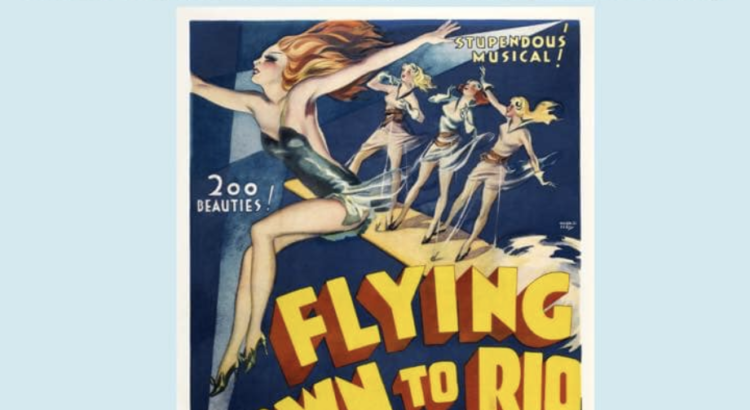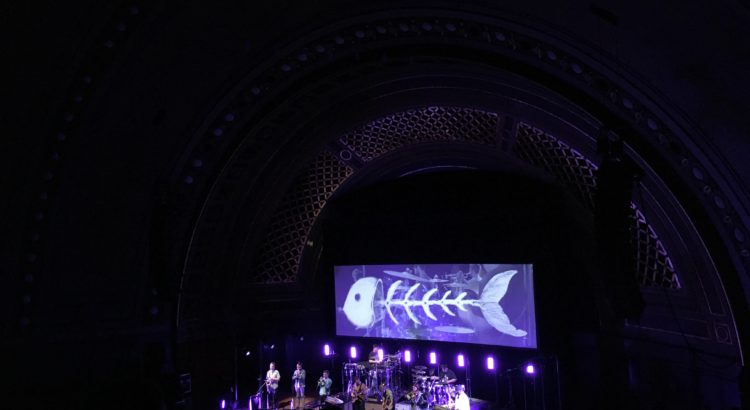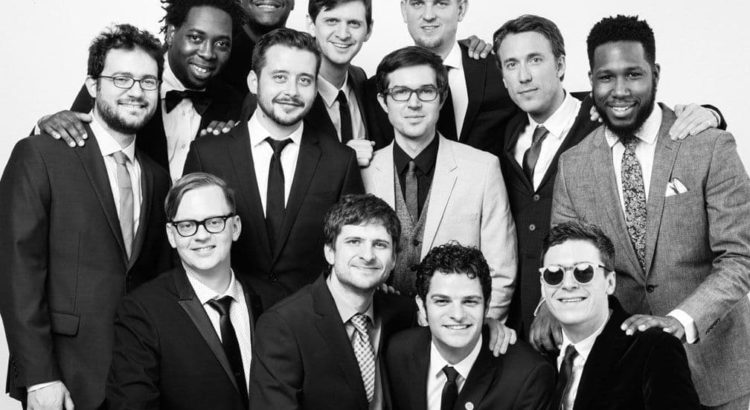To say I’m excited for the new UMS season after seeing the season opener is an understatement. There was no better way to start the school year off right than with Snarky Puppy, a band with skills beyond words and energy beyond wonder.
The night started off with Alina Engibaryan, which was the best way it could’ve started. Michael League, Jason “JT” Thomas, and Chris Bullock joined her onstage, accompanying her as she played the piano and sang the words that found their way deep into your soul in the powerful yet sultry jazz that gave you chills. She sang songs from her newest album, “We Are,” and every word she sang, every note she played, felt very pure and raw and honest. There were moments of improvisation from the members of Snarky Puppy that added an extra layer of meaning to her songs.

With Alina Engibaryan setting the tone for the night, all 3000+ listeners in Hill Auditorium were ready for Snarky Puppy, and the high expectations Alina set on the stage were met the minute the first notes filled the auditorium. The nine amazingly talented musicians of Snarky Puppy took everyone through a rollercoaster of a night, speeding things up with unbelievable improvisational solos, and then slowing it down with that same fading echo. Each member had their moment: JT Thomas on the drums and Nate Werth on percussion had a captivating duet moment; Shaun Martin transformed the keyboard into something much more than 88 keys with his talk box skills; Jay Jennings and Chris Bullock added a range of flare and style on the trumpet and tenor saxophone; Justin Stanton jumped between the keyboards and his own trumpet, sometimes playing both at the same time; Chris McQueen, Zach Brock, and Michael League kept the night going on the guitar, violin, and bass with a flash of rhythm.
Playing new songs from their recent album “Immigrance”, the collective’s most recent tunes brought a whole new meaning to jazz fusion, and even introduced the style of Moroccan Gnawa to everyone. It was impossible to feel disconnected from the music the entire night, but the coolest moment of the night was when everyone started clapping, either in 3s or 4s. The entire Hill Auditorium clapped to form this funky rhythm, and it was in that moment that I felt more connected to all 3000+ people clapping with me, more connected to the members of Snarky Puppy onstage cueing and keeping us onbeat, and more connected to the music that reverberated positivity, peace, and joy through my entire body and the entire venue.
Snarky Puppy was exhilarating, and I have no hesitation calling it one of the best concerts I’ve ever been to. With a dash of jazz, a hint of fusion, a kick of funk, and a whole lot of energy and passion, Snarky Puppy’s indescribable presence makes them unique, and their music that transcends all distinct categories makes up the core of Snarky Puppy and what makes them stand out from the crowd.
 Sundays are all too often reserved for the results of a week of steady procrastination. Or perhaps various responsibilities have tugged you every which way and through the mud despite constant work. The end of the week turns from an intended relaxation day to a horror-filled scramble to finish everything at once. We must fight this international tragedy, by starting to save time for ourselves to self-educate in the matters of the heart and spirit.
Sundays are all too often reserved for the results of a week of steady procrastination. Or perhaps various responsibilities have tugged you every which way and through the mud despite constant work. The end of the week turns from an intended relaxation day to a horror-filled scramble to finish everything at once. We must fight this international tragedy, by starting to save time for ourselves to self-educate in the matters of the heart and spirit.






